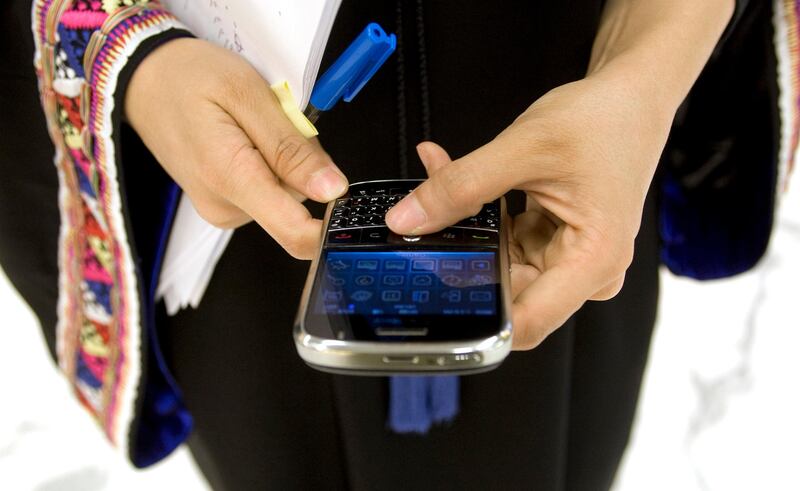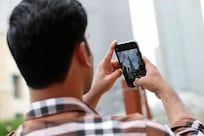If it's not clamped to your ear then it's sat in your pocket or else you're tapping away on it sending text messages and checking e-mails. The mobile phone, in all its forms, has become society's ubiquitous accessory, a social life support machine without which many of us feel almost naked.
Twitter: The National Eats We've launched a new twitter feed devoted to all things food
Last Updated: June 7th - 2011 2:09PM UAE
Join The National's new twitter feed twitter.com/thenationaleats to view the latest in restaurant reviews, recipes, food safety, features and news.
[ twitter.com/thenationaleats ]
From sending photos around the world in seconds to using the latest phone applications for finding your nearest late-night eatery, smart phones have transformed from basic communication tools into hand-held miracle machines. A mobile phone on sale today is equivalent to the most powerful computer available 20 years ago.
And yet from the outset there have been concerns over the long-term health implications of their use.
The latest release from the World Health Organisation attempted to clarify things, based upon a review of scientific studies into mobile phones and cancer risk carried out by the International Agency for Research on Cancer (IARC). But the headlines that followed it will cause concern in the UAE especially, which has a high number of mobile phone users.
"The possible risk cannot be dismissed anymore," said Dariusz Leszczynski of Finland's Radiation and Nuclear Safety Authority, a member of the IARC. "At least until we get credible new evidence to the contrary."
The announcement was made after agreement from almost all the 24 scientists on the IARC group and stated that long-term radio frequency radiation from phones might lead to two different types of cancerous tumour: glioma, a type of brain cancer, and an acoustic neuroma, a tumour of the nerves in the ear.
The IARC was established in 1965 as a branch of the WHO with a brief to catalogue potentially carcinogenic (cancer-causing) substances. In 1969 it produced a list for health authorities around the world - Monographs on the Evaluation of Carcinogenic Risks to Humans - which scores and categorises products, agents and even occupations according to their cancer risk.
Based in Lyon, France, the IARC almost annually updates the list and is funded by a number of bodies including the US National Cancer Institute and the European Commission Directorate-General of Employment, Social Affairs and Equal Opportunities.
Since its inception it has identified more than 100 "definitely carcinogenic" substances, such as asbestos and tobacco smoking, along with at least 320 "probable" or "possible" ones including coffee, talcum powder - used in certain ways - and mobile phones.
The jury is still out on a further 508 agents that the IARC are aware of research into. These are in category 3 and deemed "not classifiable as to its carcinogenicity to humans". They include an eclectic mix of fluorescent lighting, silicon breast implants, printing ink and tea.
Out of almost 1,000 complex mixtures, occupational exposures, physical and biological agents and lifestyle factors covered by the monographs only one - a nylon-manufacturing chemical found in drinking-water supplies — has been declared "probably not carcinogenic".
If the story of how your mobile phone could cause cancer seems familiar, that's because the research itself is far from new. The IARC first listed phone frequency microwaves in its monographs back in 2002. But the latest report classifies it in the "possible" cancer category - Group 2B - because they give off non-ionising radiation.
"This is the first time the IARC has placed phones at this level," explains Ed Yong, the head of Cancer UK's health evidence and information team. "The IARC are the gold standard for assessing research, they've done a round-up of most of the studies and concluded there is some evidence linking mobile phones to cancer - but it is too weak to make any strong conclusions."
Phone manufacturers were understandably quick to pick up on the categorisation being only "possible" - the radiation is not a "definite" or "probable" cause of cancer.
"Many of the reviewed studies are observational ones," explains Yong. "So in some cases these are surveys of people who have or had brain cancer. They are questioned about their mobile phone usage over the years. It's not a reliable assessment of an association between phone usage and cancer.
"Also, while the rise in the number of phones used around the world has been phenomenal, there's no equally distinct rise in the number of people suffering with brain cancer. It's not as easy to make the link, biologically, between phones and cancer the same way you can with say smoking and cancer.
"In order for studies to have any merit they have to be conducted over a long period of time. Their findings have to be thoroughly questioned, too… but the technology of these devices is changing all the time."
In 2009, the number of mobile phones in use in the Emirates topped the 10 million mark - but in the future we may be paying closer attention to how the IARC classifies phones. On the back of the latest report, one US-based environmental group published a list of the highest radiation emitting smartphone handsets. Could such ratings become an integral part of choosing a phone in the future?
In the UK, health warnings have been issued to discourage the use of phones by children; ideally only in an emergency should their developing minds be exposed to the waves phones emit.
Since we're now at a stage where today's children are going to use some form of mobile phone for most of their lives, those making the call on how safe they really are may find themselves being scrutinised much more closely.
Recipes: The National Eats
Last Updated: June 19th, 2011 UAE
From cool summer salads and soups through to delicious deserts, here is our extensive recipe collection.
[ Recipes ]











